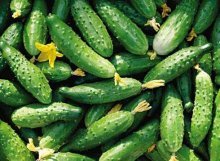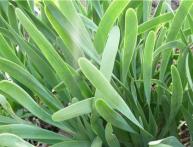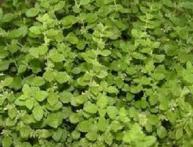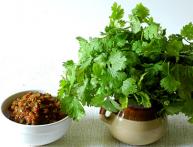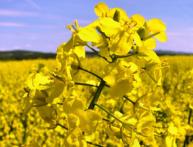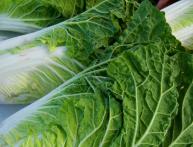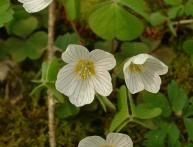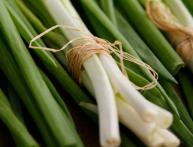Gherkins: description, benefits, use in cooking
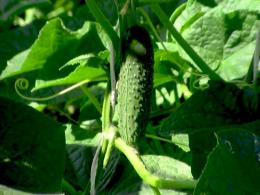
On the shelves of many supermarkets you can see jars of pickled cucumbers, which are called gherkins. But you should not blindly believe the name, since manufacturers do not always offer real gherkins. Often used for this cucumbers, which have not yet grown to large sizes, but have just appeared on the branches. Gherkins are a separate species that has its own characteristics.
Content:
- What are gherkins?
- Beneficial features
- Use in cooking and contraindications for use
- Growing and caring for gherkins
What are gherkins?
Unripe cucumbers are mistakenly called gherkins, but this is a misconception. This is a special species that is divided into many varieties. Breeders are constantly developing new varieties of gherkins, but they are all characterized by small fruits that grow no more than 10 cm. But not only the length of the cucumber differs from other types. Gherkins stand out for their huge list of useful properties, special taste, hardness, elasticity, density. They contain a lot of useful substances.
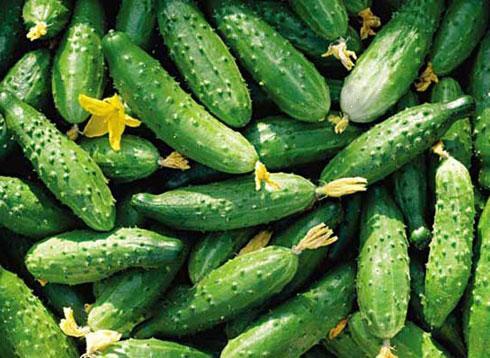
But growing this type of cucumber is a little different, as they require special care. They need to be properly fertilized and watered. Often such fruits are pickled in vinegar, spices are added, and then the result is a tasty and original product that many people have come to love.Gherkins are used not only as a snack at feasts, but also for preparing a variety of dishes.
Beneficial features
There are such beneficial features gherkins:
- This type of cucumber has a great effect on digestion and increases appetite. It is recommended to regularly consume gherkins to improve the functioning of the gastrointestinal tract. In addition to their beneficial effect, they normalize the acidity of the stomach and improve its motility.
- This vegetable is classified as a low-calorie product. Therefore, it is recommended to include it in the diet for those who want to lose weight.
- This product prevents the conversion of excess carbohydrates into fats.
The fruit contains fiber, which cleanses the intestines from food breakdown. Cucumbers can normalize blood cholesterol levels. If you regularly consume gherkins, you can improve metabolic processes in the body. Among the constituents of cucumbers is potassium, which is necessary for the normal functioning of the muscles of the heart and kidneys.
If a person suffers from swelling, then he is recommended to eat gherkins. This is due to the fact that they contain substances that remove excess fluid.
Gherkins are saturated with iodine, so they should be consumed for preventive purposes to avoid problems with the thyroid gland. Surprisingly, the beneficial substances of cucumbers also transfer to the brine. In addition, this liquid is used to combat hangovers. The composition of the gherkins concentrated a lot vitamins and minerals. Therefore, they are often used in cosmetology to treat a variety of problems. Juice is extracted from them, which can relieve fatigue and significantly improve the skin. The fruits are crushed and then used to remove skin inflammation.
Use in cooking and contraindications for use
Gherkins have found their use in cooking. They are used like other types of cucumbers. They are often used fresh and pickled. The fruits are added to a variety of dishes, they improve their taste and add tenderness. When pickled, gherkins can be used in salads. And don’t forget that they are great as a regular snack.
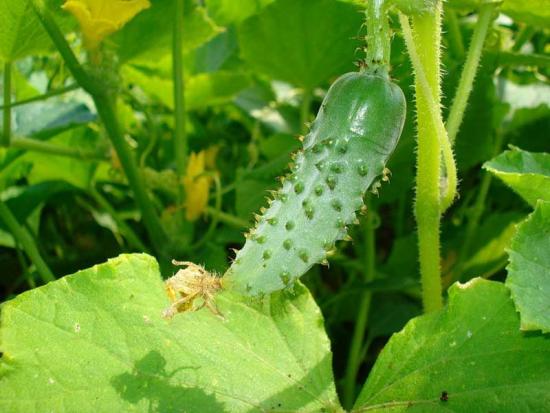
Despite a whole list of beneficial properties, gherkins can also cause harm. They are not recommended to be consumed in excessive quantities by mothers who are breastfeeding their children. This is due to the fact that they can cause stomach pain in a newborn. If a person suffers from gastritis, colitis or ulcers, then you should not eat pickled cucumbers. It is not recommended to get carried away with eating gherkins for those who have cholecystitis, hepatitis and nephritis.
Growing and caring for gherkins
To grow gherkins, you must adhere to some rules of cultivation and care. The beds in which cucumbers grow should be kept clean. It is necessary to regularly eliminate emerging weeds. The soil should be loosened frequently. When the fruits ripen, the bed needs to be well watered.
Experienced gardeners do not recommend using scattered watering. This is due to the fact that water that gets on the foliage harms the plant. It is better to moisten the soil near the bushes. If the plant does not have enough moisture, its leaves will begin to wither. When the gherkin bushes are actively developing, it is worth feeding. For this purpose, appropriate fertilizers are used.
If the plant receives normal nutrition, then it will delight with the constant appearance of gherkins.To do this, it is recommended to fertilize four times. Fertilizers are first applied when the bushes begin to bloom. For this, chicken manure and nitrophoska are used. During fruit appearance, phosphorus, potassium and nitrogen are added.
When the harvest has been harvested, it is necessary to carry out the subcortex again. Subsequently, the procedure is repeated after 2 weeks. So, gherkins are amazing vegetables that are endowed with a huge list of beneficial properties. But growing a plant requires following certain rules. care. Gherkins should not be confused with cucumbers that were picked before they were fully ripe.
Video review of the gherkin representative:

